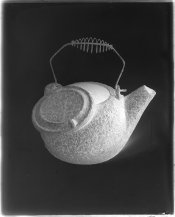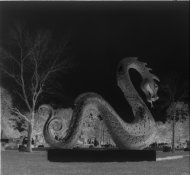dwross
Member
I'm afraid I know all too well what they look like. I've "made" my own. Much worse than yours (as if it's a competition!  ) I'm annoyed that I can't find one of those plates. I generally keep samples of all problems. But, I've gotten pretty ruthless with the de-cluttering. Only so much junk any one studio can hold!
) I'm annoyed that I can't find one of those plates. I generally keep samples of all problems. But, I've gotten pretty ruthless with the de-cluttering. Only so much junk any one studio can hold!
I loved the plates you sent. They were from your very early batches and I think they are lovely. The "imperfections" don't bother me a bit. I don't think of them as "swirlies," however. (I will broaden my definition of what we're investigating.) I turned your plates into digital negatives to contact print on gaslight and POP paper. Didn't take much work at all to make a good digital negative.
 ) I'm annoyed that I can't find one of those plates. I generally keep samples of all problems. But, I've gotten pretty ruthless with the de-cluttering. Only so much junk any one studio can hold!
) I'm annoyed that I can't find one of those plates. I generally keep samples of all problems. But, I've gotten pretty ruthless with the de-cluttering. Only so much junk any one studio can hold!I loved the plates you sent. They were from your very early batches and I think they are lovely. The "imperfections" don't bother me a bit. I don't think of them as "swirlies," however. (I will broaden my definition of what we're investigating.) I turned your plates into digital negatives to contact print on gaslight and POP paper. Didn't take much work at all to make a good digital negative.

















 , I'll continue to contribute to this investigation.
, I'll continue to contribute to this investigation.

 .
.
